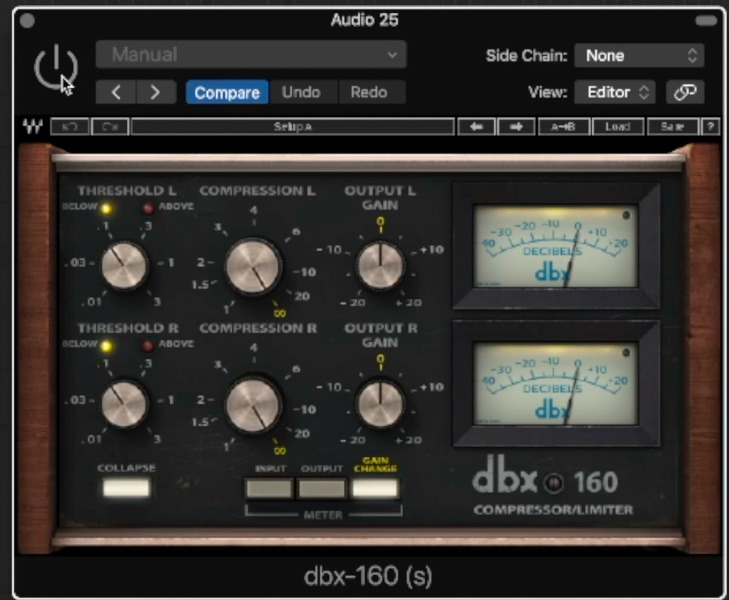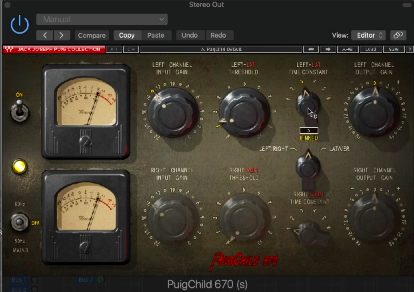Music Production Tutorial #5
Advanced Compression Techniques in Logic X From Jack Joseph Puig
Here’s 2 Advanced compression techniques in Logic X but you can use the ideas in any DAW. The ideas are mentioned by Jack Joseph Puig and are both very specific uses of more broad advanced compression techniques.
If you haven’t encountered JJP before he’s a producer/mixer well worth listening to. There’s actually one particular interview with JJP where he discusses both of these techniques.
These applications are Parallel Compression and Mix Buss Compression using plugin models of classic studio gear. JJP was involved in the process of making these plugins and they bear his name.
Advanced Compression Technique #1 – Parallel Compression For Snare Attack
As I say, this is a broad topic and essentially just means you copy a signal and compress one sound but not the other. New York Compression is the classic example of this.
This use is a bit different though, we use it to brighten a snare and give us a large attack on the front end of the sound. First, copy the track and to the copy add a dbx 160 compressor and really hit the snare hard with it.

There’s no attack and release on the compressor so you get a small bit of attack before the compression kicks in. It sounds very aggressive and frankly, wrong but go with it. You want a “ka ka ka” type of sound.
Now take this sound and add a gate so you’re left with just the attack and nothing else. This track is your attack fader. Pull it all the way down and slowly ease it in alongside your natural snare until it has the right amount of brightness to it.
In this example it works really well and the natural snare needs no compression at all but often you would still compress the original snare. Check the video for the results.
This logic can be applied to various instruments in different situations, the most obvious being the other elements of the drum kit.
Advanced Compression Technique #2 – Fairchild 670 Mix Buss Compression
This of course is a very common technique, adding compression to an entire mix. This can add punch and squeeze the elements together very subtly and generally make the mix feel more finished.
The use of this particular hardware is more because of the feeling that the compressor lends the track. It uses a clone of the iconic Fairchild 670. Containing 20 valves, 30 systems and 11 transformers this 1950s compressor that would set you back a small fortune if you went for the hardware version! Thankfully, Waves and JJP made the Puigchild 670. The original was used extensively by The Beatles and many others.

I set up the compressor and just went for a dB or so showing on the meter. You can hear the tone change as soon as you add the compressor but the effect is subtle. It removes some of the rigidity from the drum performance and lends a silky bounce to the track which is quite sumptuous.
Attack and Release
The attack and release settings are limited to 5 options, each option gives you a set attack and release that must be used together, you can’t adjust them individually. None of them offer a short release (minimum 300ms) so it’s suited for smoother uses. As this track has a slow tempo and sparse beat, the compressor has time to open up again nicely before the snare hits again. I went for setting 3 which is an attack of 0.4ms and a release of 2 seconds.
Lets Talk About Feelings
When comparing the before and after of this compressor, try to respond emotionally. What I mean by that is try to turn off the analytical part of the brain and just listen as a ‘normal’ person would (do they even exist?).
It really feels like the track moves with the musicians in an organic way. My body tingles which I always regard as a good sign. It feels real and reactive. The drama of the song is enhanced and it transforms the recording into a much more finished emotive transmission.
Am I waffling? I don’t think I am. Music is about a mood, about transmitting emotion and energy. Our job as mixers and producers is to bring that energy to the fore and enhance it. Knowing what excess 160Hz on the bass sounds like is definitely useful. It will all be a bit limiting though if you can’t switch to ‘feeling mode’ and try to understand how the music will be interpreted in the end.
